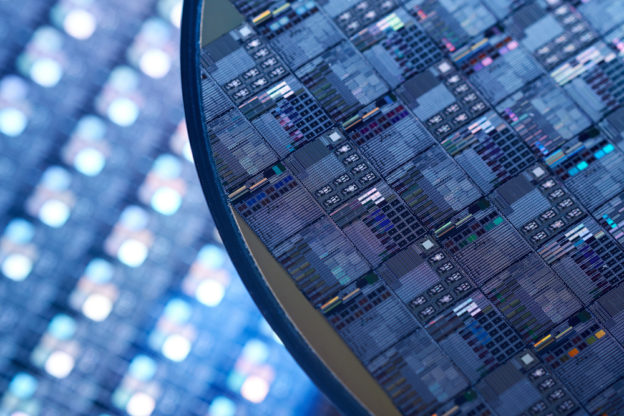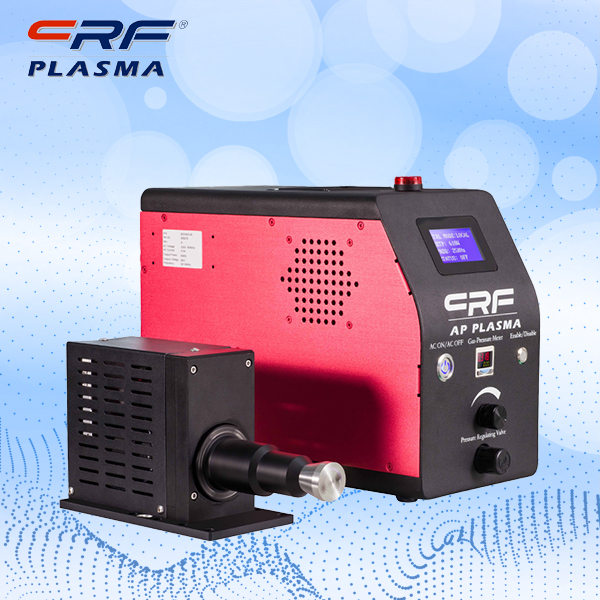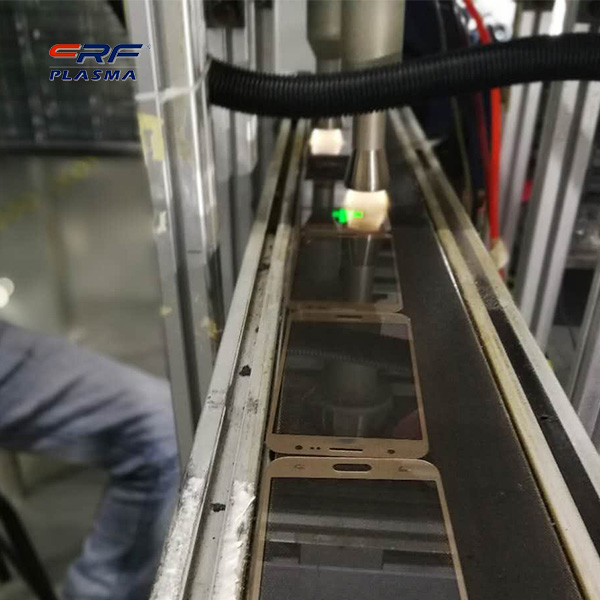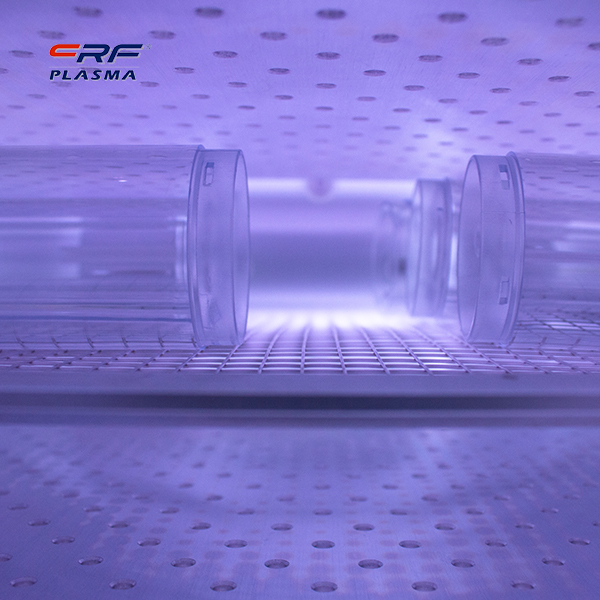
Welcome to Shenzhen Sing Fung Intelligent Manufacturing Co., Ltd.
E-mail:shaobo@sfi-crf.com
The energy range of the plasma is very wide. There is no choice for the excitation or ionization of electrons
- Categories:Industry News
- Author:Plasma cleaning machine-CRF plasma plasma equipment-plasma surface treatment machine manufacturer-chengfeng intelligent manufacturing
- Origin:
- Time of issue:2022-01-06
- Views:
(Summary description)The energy range of the plasma is very wide. There is no choice for the excitation or ionization of electrons: Chemical reactions can only occur when the energy of the molecule exceeds the activation energy. In conventional chemistry, energy is transferred by collisions between molecules or between molecules and walls. In plasma, on the one hand, the vibrational energy is increased to a small response energy in a certain order; on the other hand, the collision of electrons and molecules can transfer more energy, which makes neutral molecules become multiple active components, or makes moderately active The components are ionized, and the new components mainly include super-active neutral particles, cations and anions. Traditional chemical reactions cannot produce many new components, but plasma has become a very powerful means of chemical manipulation, which is burdened with catalysis. Generally speaking, reactions with lower temperatures, and perhaps reactions with faster reaction speeds at a certain temperature, are all affected by the plasma. But in a plasma with a wide energy range, the excitation or ionization of electrons is not selective. In a plasma system, many different types of active particles can cause a large number of reactions. During the reaction process, it is almost impossible for the particularly important and significant particles to be manipulated. High-energy particles can destroy the covalent bonds of molecules in the plasma environment. The use of a strong local field to participate in the tail of the strong electron scattering function in high-energy electrons and non-equilibrium plasma may produce new chemical reactions. The plasma environment is conducive to many chemical reactions. Process parameters such as gas type, flow rate, pressure, input power, etc. determine whether a reaction can produce the primary input process parameters. There will also be multiple reactions between the border and the bottom. Ablation rate and accumulation rate are obtained through related surface treatment. When organic vapor is used as the working gas, polymerization and aggregation of plasma will occur. During the etching and accumulation process, the surface of the material reacts with the original or newly generated components in the plasma, that is, the surface conditions, such as pollutants, polymerization inhibitors, barrier layers, gas adsorption, etc., will affect the process dynamics and the accumulation of the film. Characteristics have an impact. The molecules in the plasma are decomposed into highly active components, which then react with organic matter. Hydrogen can be connected to double bonds and can be separated from other molecules. In oxygen-based plasma, there are many components of ionization and dissociation energies. Others can also constitute metastable components like O2(1△g). For the oxygen atom, the important reaction is to add a double bond, and the CH bond becomes a hydroxyl or carboxyl group. Nitrogen can react with saturated or unsaturated molecules. An interesting development of plasma chemistry is the decomposition of original simple molecules into chaotic molecular structures. Typical reactions include: isomerization, elimination of atoms or small groups, dimerization/polymerization, and destruction of original data, etc., for example, the mixture of methane, water, nitrogen, and oxygen through the glow discharge, and finally obtained from The substance of life-amino acids. There is cis-trans isomerization, ring formation, and ring-opening reactions in the plasma. In addition to single-molecule reactions, bimolecular reactions can also occur.
The energy range of the plasma is very wide. There is no choice for the excitation or ionization of electrons
(Summary description)The energy range of the plasma is very wide. There is no choice for the excitation or ionization of electrons:
Chemical reactions can only occur when the energy of the molecule exceeds the activation energy. In conventional chemistry, energy is transferred by collisions between molecules or between molecules and walls. In plasma, on the one hand, the vibrational energy is increased to a small response energy in a certain order; on the other hand, the collision of electrons and molecules can transfer more energy, which makes neutral molecules become multiple active components, or makes moderately active The components are ionized, and the new components mainly include super-active neutral particles, cations and anions. Traditional chemical reactions cannot produce many new components, but plasma has become a very powerful means of chemical manipulation, which is burdened with catalysis. Generally speaking, reactions with lower temperatures, and perhaps reactions with faster reaction speeds at a certain temperature, are all affected by the plasma.
But in a plasma with a wide energy range, the excitation or ionization of electrons is not selective. In a plasma system, many different types of active particles can cause a large number of reactions. During the reaction process, it is almost impossible for the particularly important and significant particles to be manipulated.
High-energy particles can destroy the covalent bonds of molecules in the plasma environment. The use of a strong local field to participate in the tail of the strong electron scattering function in high-energy electrons and non-equilibrium plasma may produce new chemical reactions.
The plasma environment is conducive to many chemical reactions. Process parameters such as gas type, flow rate, pressure, input power, etc. determine whether a reaction can produce the primary input process parameters. There will also be multiple reactions between the border and the bottom. Ablation rate and accumulation rate are obtained through related surface treatment. When organic vapor is used as the working gas, polymerization and aggregation of plasma will occur. During the etching and accumulation process, the surface of the material reacts with the original or newly generated components in the plasma, that is, the surface conditions, such as pollutants, polymerization inhibitors, barrier layers, gas adsorption, etc., will affect the process dynamics and the accumulation of the film. Characteristics have an impact.
The molecules in the plasma are decomposed into highly active components, which then react with organic matter. Hydrogen can be connected to double bonds and can be separated from other molecules. In oxygen-based plasma, there are many components of ionization and dissociation energies. Others can also constitute metastable components like O2(1△g). For the oxygen atom, the important reaction is to add a double bond, and the CH bond becomes a hydroxyl or carboxyl group. Nitrogen can react with saturated or unsaturated molecules.
An interesting development of plasma chemistry is the decomposition of original simple molecules into chaotic molecular structures. Typical reactions include: isomerization, elimination of atoms or small groups, dimerization/polymerization, and destruction of original data, etc., for example, the mixture of methane, water, nitrogen, and oxygen through the glow discharge, and finally obtained from The substance of life-amino acids. There is cis-trans isomerization, ring formation, and ring-opening reactions in the plasma. In addition to single-molecule reactions, bimolecular reactions can also occur.
- Categories:Industry News
- Author:Plasma cleaning machine-CRF plasma plasma equipment-plasma surface treatment machine manufacturer-chengfeng intelligent manufacturing
- Origin:
- Time of issue:2022-01-06 14:11
- Views:
The energy range of the plasma is very wide. There is no choice for the excitation or ionization of electrons:
Chemical reactions can only occur when the energy of the molecule exceeds the activation energy. In conventional chemistry, energy is transferred by collisions between molecules or between molecules and walls. In plasma, on the one hand, the vibrational energy is increased to a small response energy in a certain order; on the other hand, the collision of electrons and molecules can transfer more energy, which makes neutral molecules become multiple active components, or makes moderately active The components are ionized, and the new components mainly include super-active neutral particles, cations and anions. Traditional chemical reactions cannot produce many new components, but plasma has become a very powerful means of chemical manipulation, which is burdened with catalysis. Generally speaking, reactions with lower temperatures, and perhaps reactions with faster reaction speeds at a certain temperature, are all affected by the plasma.
But in a plasma with a wide energy range, the excitation or ionization of electrons is not selective. In a plasma system, many different types of active particles can cause a large number of reactions. During the reaction process, it is almost impossible for the particularly important and significant particles to be manipulated.
High-energy particles can destroy the covalent bonds of molecules in the plasma environment. The use of a strong local field to participate in the tail of the strong electron scattering function in high-energy electrons and non-equilibrium plasma may produce new chemical reactions.
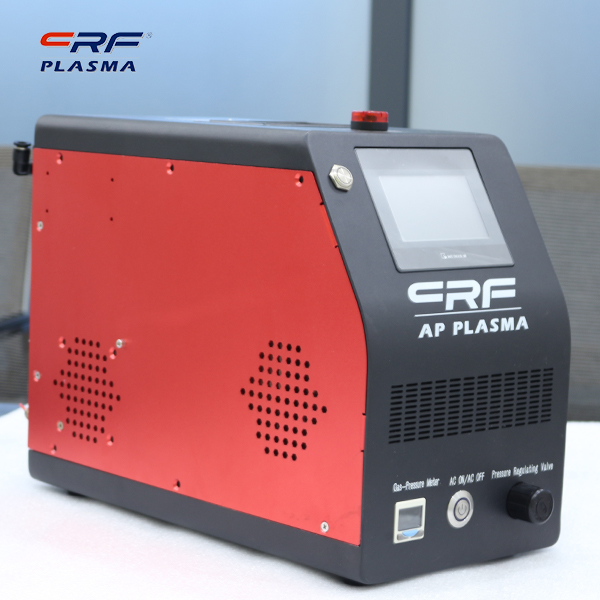 The plasma environment is conducive to many chemical reactions. Process parameters such as gas type, flow rate, pressure, input power, etc. determine whether a reaction can produce the primary input process parameters. There will also be multiple reactions between the border and the bottom. Ablation rate and accumulation rate are obtained through related surface treatment. When organic vapor is used as the working gas, polymerization and aggregation of plasma will occur. During the etching and accumulation process, the surface of the material reacts with the original or newly generated components in the plasma, that is, the surface conditions, such as pollutants, polymerization inhibitors, barrier layers, gas adsorption, etc., will affect the process dynamics and the accumulation of the film. Characteristics have an impact.
The plasma environment is conducive to many chemical reactions. Process parameters such as gas type, flow rate, pressure, input power, etc. determine whether a reaction can produce the primary input process parameters. There will also be multiple reactions between the border and the bottom. Ablation rate and accumulation rate are obtained through related surface treatment. When organic vapor is used as the working gas, polymerization and aggregation of plasma will occur. During the etching and accumulation process, the surface of the material reacts with the original or newly generated components in the plasma, that is, the surface conditions, such as pollutants, polymerization inhibitors, barrier layers, gas adsorption, etc., will affect the process dynamics and the accumulation of the film. Characteristics have an impact.
The molecules in the plasma are decomposed into highly active components, which then react with organic matter. Hydrogen can be connected to double bonds and can be separated from other molecules. In oxygen-based plasma, there are many components of ionization and dissociation energies. Others can also constitute metastable components like O2(1△g). For the oxygen atom, the important reaction is to add a double bond, and the CH bond becomes a hydroxyl or carboxyl group. Nitrogen can react with saturated or unsaturated molecules.
An interesting development of plasma chemistry is the decomposition of original simple molecules into chaotic molecular structures. Typical reactions include: isomerization, elimination of atoms or small groups, dimerization/polymerization, and destruction of original data, etc., for example, the mixture of methane, water, nitrogen, and oxygen through the glow discharge, and finally obtained from The substance of life-amino acids. There is cis-trans isomerization, ring formation, and ring-opening reactions in the plasma. In addition to single-molecule reactions, bimolecular reactions can also occur.
Scan the QR code to read on your phone

TEL:0755-3367 3020 / 0755-3367 3019

E-mail:sales-sfi@sfi-crf.com

ADD:Mabao Industrial Zone, Huangpu, Baoan District, Shenzhen





